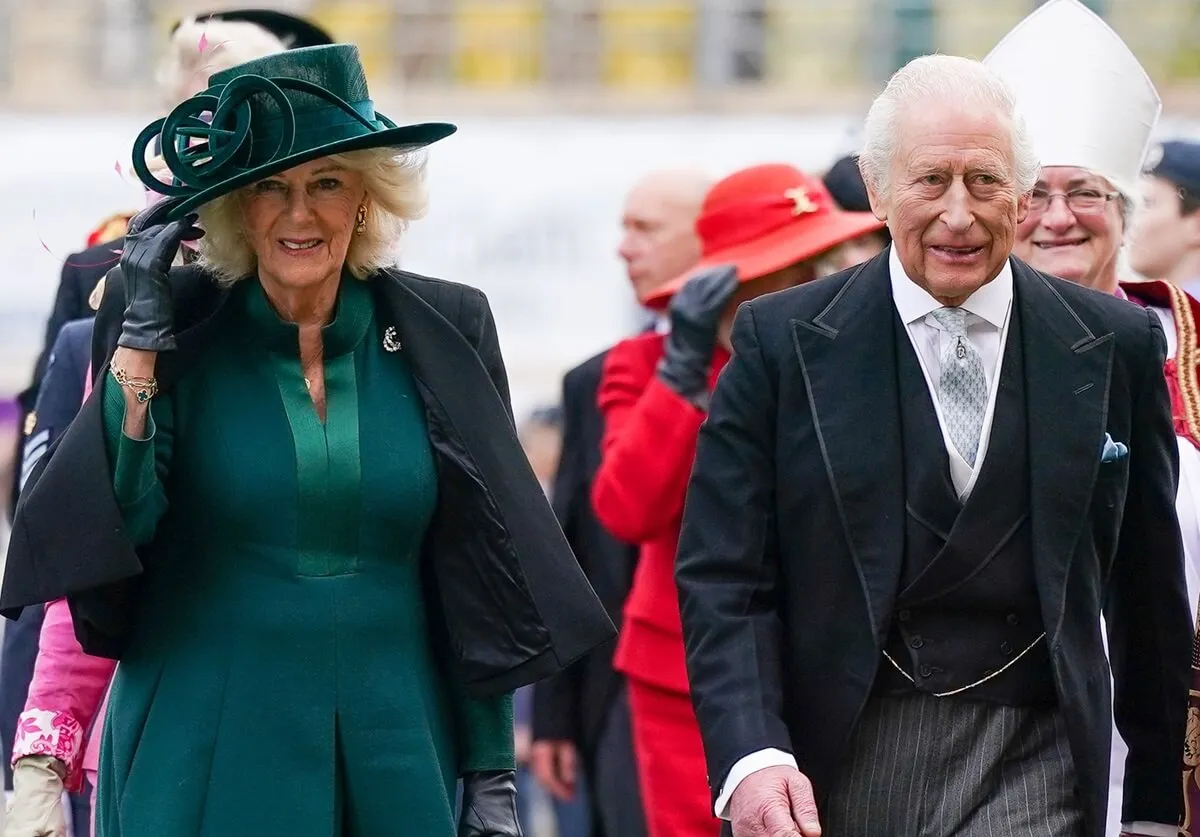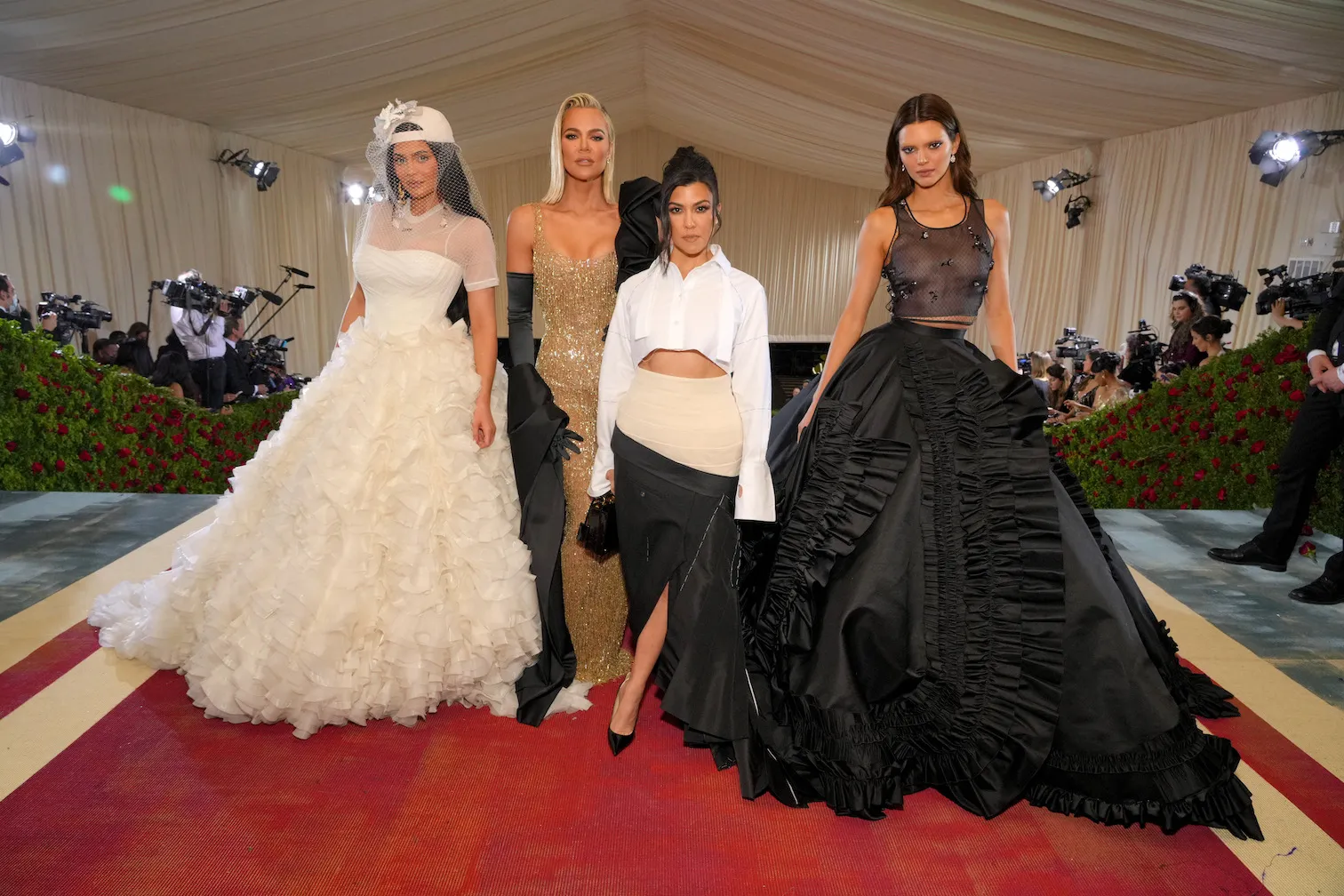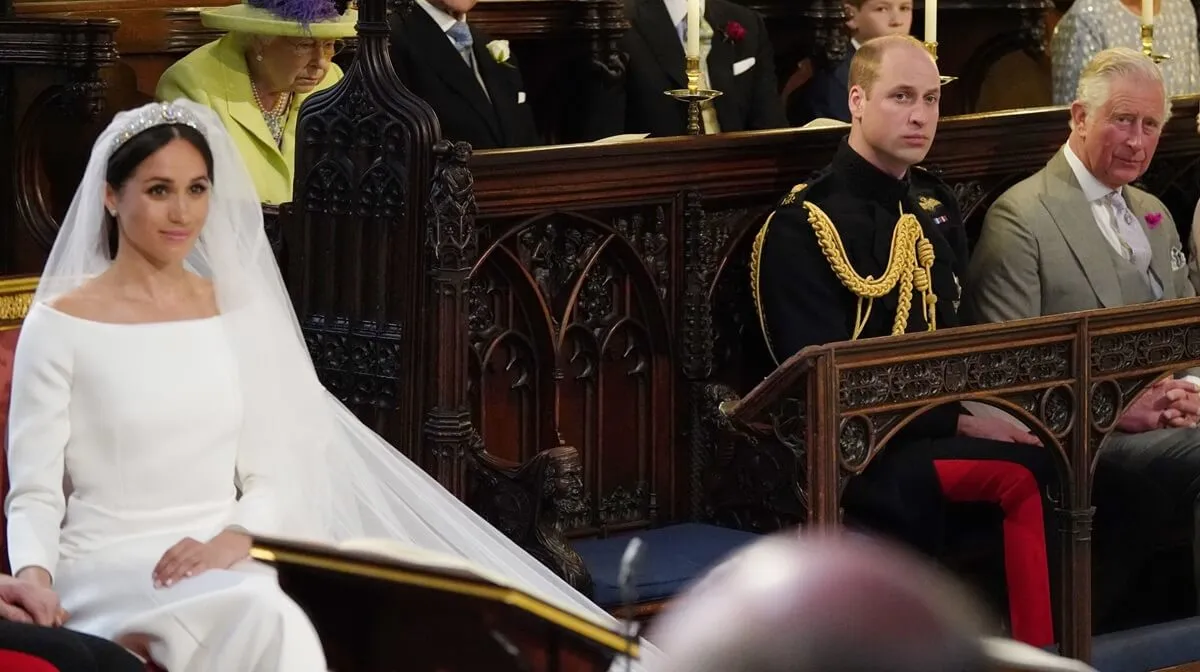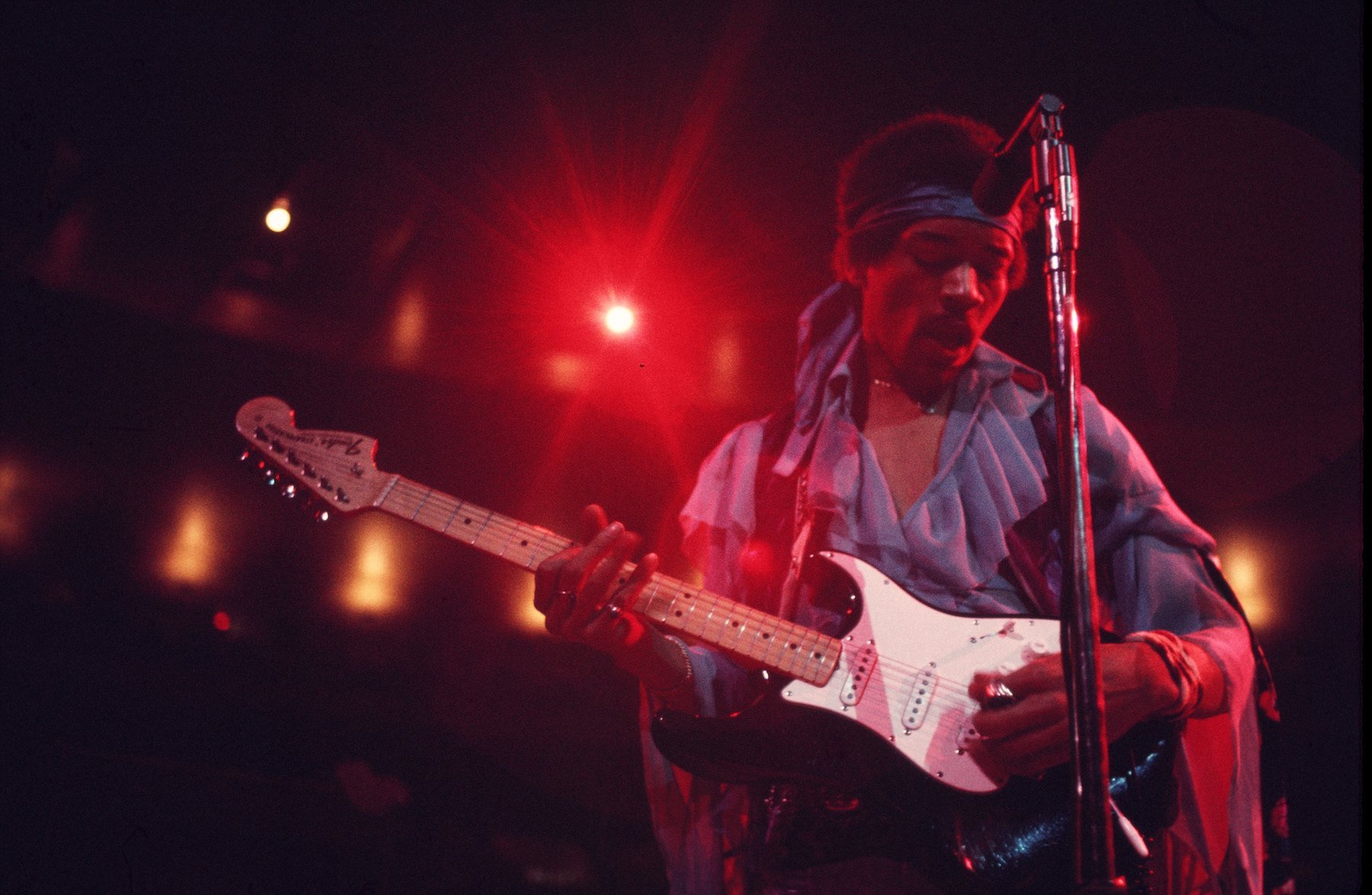
Young Jimi Hendrix Couldn’t Afford to Go to an Elvis Concert So He Watched Atop a Nearby Hill
Jimi Hendrix was a legendary rock musician with his own hit songs to his name. But long before he was famous, he looked up to musicians like Elvis Presley who electrified crowds with their stage presence. Hendrix was so determined to listen to Elvis perform that he tried to experience his concert from far away.
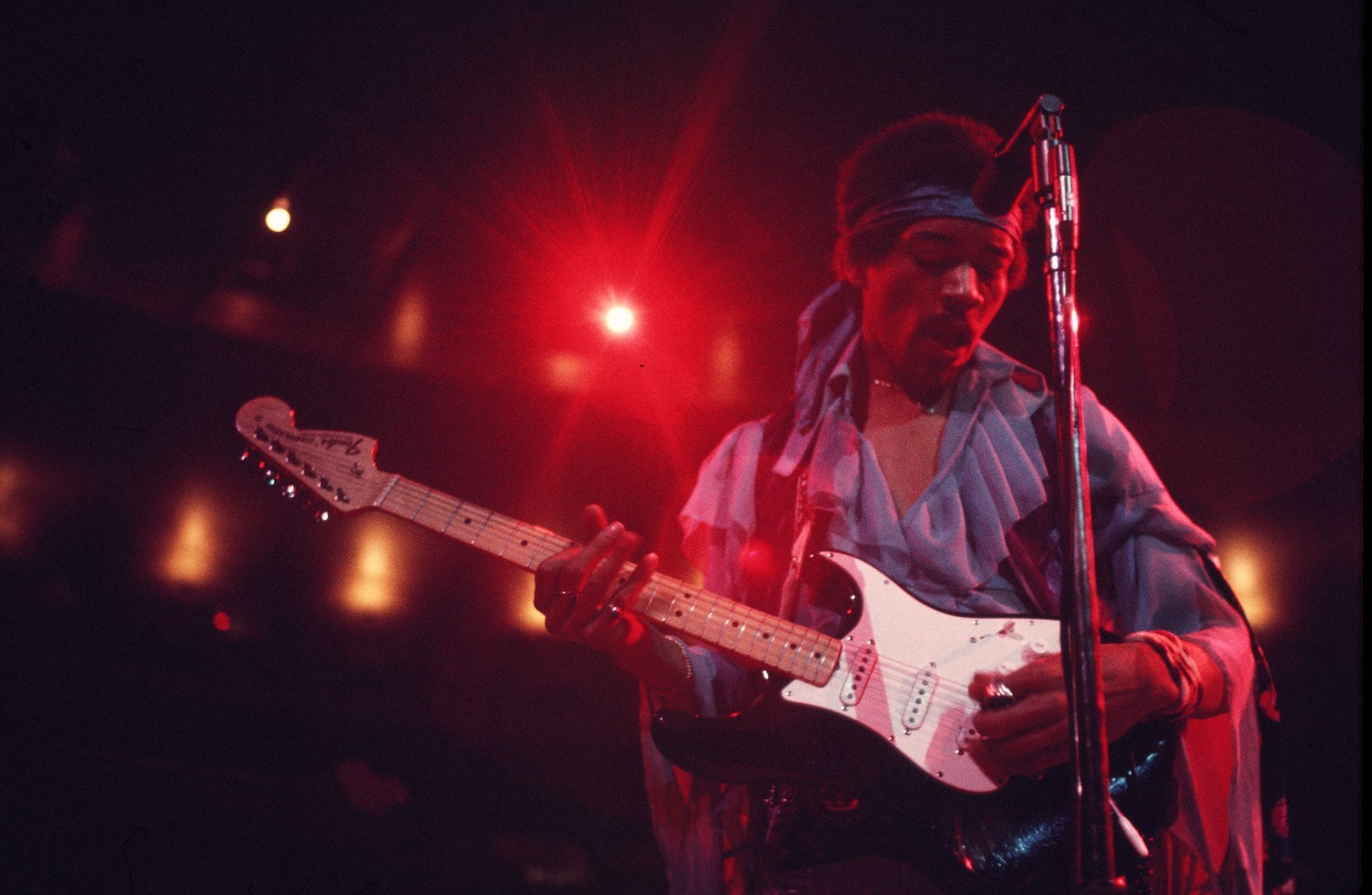
Elvis Presley was a disruptor in rock music
Philip Norman’s 2020 book Wild Thing: The Short, Spellbinding Life of Jimi Hendrix gave a look into the musical atmosphere that Hendrix grew up in, and how it informed his life as a Black rock musician. In the mid-1950s, Elvis Presley upset much of America by performing rock ‘n’ roll, up until then largely a Black genre, that was deemed scandalous for its lyrical content and for his over-the-top stage performances.
“Elvis Presley outraged America as the first white vocalist to perform with the uninhibitedness of black ones, and black R&B music, rebranded as rock ‘n’ roll, aroused its white teenage population to mass frenzy,” Norman wrote. “Racism fought back with all the unrestrained weapons at its command. Presley was condemned and derided for propagating the ‘jungle music,’ until then as strictly segregated as restrooms, lunch counters and drinking fountains, and thereby likely to corrupt and debase young white people as much as it did Black ones.”
“Since there was no ignoring its commercial opportunities, however, R&B songs like Ivory Joe Hunter’s ‘Shake, Rattle and Roll,’ Roy Brown’s ‘Good Rocking Tonight,’ and Little Richard‘s ‘Tutti Frutti,’ with their barely disguised sexual jokery, were put out in watered-down cover versions by white performers like Pat Boone and Ricky Nelson, in which form a number entered the mainstream record charts,” he continued. “The long tradition of stealing from black musicians reached an unprecedented high.”
He had to watch an Elvis concert from a hill
Norman went on to describe Hendrix’s admiration for Presley as a teenager.
“Buster [Jimi’s nickname as a child] was fascinated by Presley: his Technicolor clothes, borrowed from country music, his supposedly ‘obscene’ body movements and the guitar that was so essential a part of the exploding package,” he said.
Hendrix, ever the artist, even sketched a drawing of Presley. “Forgetting ballplayers and racing cars, he drew an elaborate portrait of Presley, surrounded by his song titles, like ‘Blue Suede Shoe,’ ‘Don’t Be Cruel,’ and ‘Parilized’ (sic),” he wrote.
Eventually, when Presley was performing in Seattle, Hendrix had to improvise to see the hit artist, as he couldn’t afford entry to the concert. “‘The Pelvis’s’ trail of hysteria-rent concerts included one at Sick’s baseball stadium in Seattle but, the $1.50 ticket price being way beyond Buster, he could only watch from the hill above the stadium, seeing little more of Presley than a hyperactive dot,” Norman said. “‘He used to sing Elvis songs to me to make me go to sleep,’ Leon [Jimi’s brother] recalls. ‘My favourite was “Love Me Tender.”‘”
Both Jimi Hendrix and Elvis Presley died premature deaths in the 1970s
Hendrix eventually launched his career as a backing guitarist for the likes of Little Richard and Ike and Tina Turner. In the mid-1960s, Hendrix began recording his own music with his band, The Jimi Hendrix Experience.
The Jimi Hendrix Experience released three albums in a two-year span in the late 1960s: Are You Experienced, Axis: Bold as Love, and Electric Ladyland. In September 1970, Hendrix died at the age of 27 as the result of a drug overdose.
Presley, who himself struggled with addiction in his career, returned to the spotlight in music at the same time Hendrix had blown up. Eventually, Presley also died in 1977.
